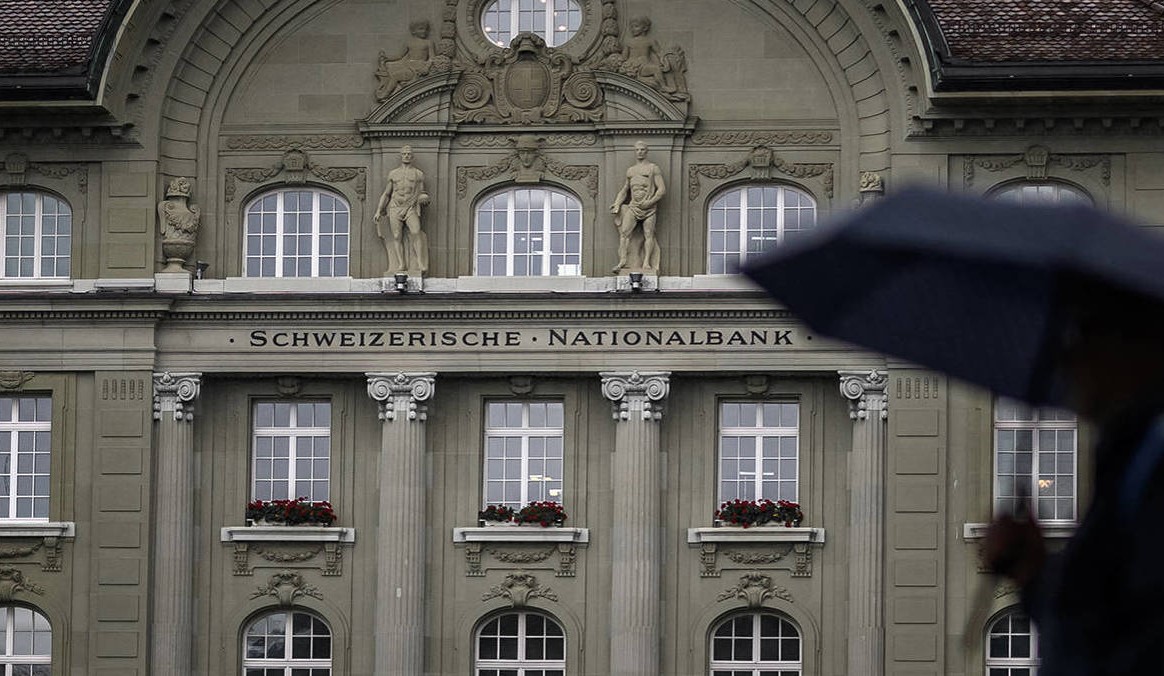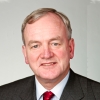
By Willem Buiter and Ebrahim Rahbari*
Once again, the idea of negative interest rates has made headlines, following the Swiss National Bank’s (SNB) decision in December to cut its policy rate to a mere 0.5%. When this issue has come up in the past, commentators have decried negative nominal interest rates as “a calamitous misadventure,” “anti-capitalistic,” and even the “dumbest idea in the history of economics.” And though the official accounts from officials at central banks that implemented negative rates were less scathing, they were hardly enthusiastic.
After peaking at $18 trillion in late 2020, the global stock of negatively yielding debt had collapsed by 2022, as central banks hiked rates to contain inflation. When even the Bank of Japan raised its policy rate into positive territory in March 2024, many observers saw it as the end of an era; negative rates were unlikely to be revisited soon.
But reports of the death of negative rates were greatly exaggerated. Two months before the SNB’s December rate cut, the bank’s new chairman, Martin Schlegel, made it clear that negative rates could not be ruled out. While financial markets anticipate Swiss rates falling to zero and staying there, we believe that the SNB could “go negative” again within the next year.
One reason is that negative policy rates can be used to counter excessive currency appreciation, which is indeed an issue for Switzerland. In December 2024, the country’s annual consumer-price-index inflation rate was just 0.6%, well within the SNB’s inflation target of “less than 2%” – which itself is below the unofficial norm across developed economies. Meanwhile, the Swiss franc has appreciated significantly, rising by over 40% against the euro since the euro was introduced.
The franc’s strength does not reflect Switzerland’s blistering economic growth (GDP grew by a respectable but modest 2% year on year in the third quarter of 2024) or stock-market performance, but its status as a safe haven. Despite mishaps like the collapse of Credit Suisse in 2023, the Swiss franc – like gold or Bitcoin – has become a hedge against currency debasement elsewhere.
Switzerland’s safe-haven status is not new, of course. Since introducing foreign deposit charges in the 1970s, the SNB has regularly shown how negative rates can deter capital inflows without overly disrupting the domestic economy. In the Swiss case, negative rates have primarily been a tool for exchange-rate and capital-account management, similar to interventions in the currency market or capital controls. Seen in those terms, they have earned their keep.
Negative rates also have re-entered the policy discussion because policy rates are falling globally once again, even as market rates have rebounded. Economies from Canada to Sweden are grappling with falling inflation and rising unemployment. While markets still expect policy rates to stay positive in these cases, a disinflationary shock could push central banks to a point where a sufficiently stimulative real (inflation-adjusted) policy rate requires nominal policy rates to dip below zero.
That brings us to the final reason negative rates cannot be ruled out: the alternative tools to stimulate demand are compromised. Around the world, central banks are still trying to understand what went wrong in the Great Inflation of the 2020s. What is clear, though, is that gaping fiscal deficits and record-high public debt may constrain further fiscal stimulus without monetary support. And yet, central banks’ asset purchases over the past decade and a half were both excessive and costly. They led directly to large balance-sheet losses for central banks, and indirectly to fiscal profligacy and the emergence of asset bubbles.
Given these outcomes, we think most assessments of negative interest rates miss the point. They ignore the fact that policy rates barely went negative (the lowest was -0.75% in, you guessed it, Switzerland), and that such rates were passed through only partly to corporations and even less so to households. Moreover, most would agree that the distortionary side effects of negative rates were modest. As Schlegel notes, “nobody likes negative interest rates,” but the main takeaway from recent experience is that “they worked.”
To be sure, we are not predicting a wholesale return to the era of secular stagnation and ultra-low rates, nor would we argue that negative rates are a surefire way to stimulate demand. But they do supplement the monetary-policy arsenal when there is low inflation and weak economic activity.
Given this potential, negative policy rates should be seen as a standard tool for currency and capital-account management. Moreover, we expect a greater divergence between countries and over time. Given the dearth of alternative demand-management tools, negative policy rates – alone or in combination with other instruments – will remain relevant at least somewhere.
The return of negative interest rates is a useful reminder that economic circumstances can shift quickly, as can policymakers’ trade-offs and mindsets. In a world of rising volatility and policy trade-offs, negative rates will be a tool that policymakers and investors cannot ignore – whether they like it or not.
Willem H. Buiter, a former chief economist at Citibank and former member of the Monetary Policy Committee of the Bank of England, is an independent economic adviser. Ebrahim Rahbari, Head of Rates Strategy and Head of Research, US at Absolute Strategy Research, is a former chief currency strategist, global head of foreign-exchange analysis, and head of global macroeconomics at Citigroup. This content is © Project Syndicate, 2025, and is here with permission.
8 Comments
Thanks for the article, interesting read.
"economic circumstances can shift quickly"
So true. it wasn't long ago when most thought that the Covid virus is here to stay for a while and that interest rates will therefore stay LFL or could even go negative. That messaging resulted in so many people throwing their savings at all the available assets (mainly real estate). All this spectacularly turned around to bite some people in the rear.
Those who haven't learned their lesson the first time should be cautious about interest rates today being HFL. Of course interest rates could stay HFL or even go up, but they could also continue to decrease further than we expect, since it can all turn around quickly, as the article says.
"The franc’s strength does not reflect Switzerland’s blistering economic growth (GDP grew by a respectable but modest 2% year on year in the third quarter of 2024) or stock-market performance, but its status as a safe haven. Despite mishaps like the collapse of Credit Suisse in 2023, the Swiss franc – like gold or Bitcoin – has become a hedge against currency debasement elsewhere.
Switzerland’s safe-haven status is not new, of course. Since introducing foreign deposit charges in the 1970s, the SNB has regularly shown how negative rates can deter capital inflows without overly disrupting the domestic economy. In the Swiss case, negative rates have primarily been a tool for exchange-rate and capital-account management, similar to interventions in the currency market or capital controls. Seen in those terms, they have earned their keep.'
What in fact does determine a currencies 'value'?....it appears nobody really knows.
Negative interest rates seem like a dangerous place to be, we couldn't handle 2% interest rates without people over extending on debt.if they were to rise out of negative by a few percent.
Surely there are policies to manage this.
There are policies to manage this. e.g. NZ now has DTI limits which will provide a constraint on lending with interest rates below about 4 per cent.
Cool, that's legitimately what I was talking about.
But I was also wondering about policies for business considering debt relies on cash flow, if interest rates rise they always need to have spare cash flow or be able to sell assets.
Landlords will be able to take out interest only mortgages and the cashflow numbers might finally stack up.
And landlords could indefinitely raise rent since tents could borrow at negative interest rates to pay it
Funny aye!
Growing demand on a finite planet? What could go wrong?

We welcome your comments below. If you are not already registered, please register to comment.
Remember we welcome robust, respectful and insightful debate. We don't welcome abusive or defamatory comments and will de-register those repeatedly making such comments. Our current comment policy is here.